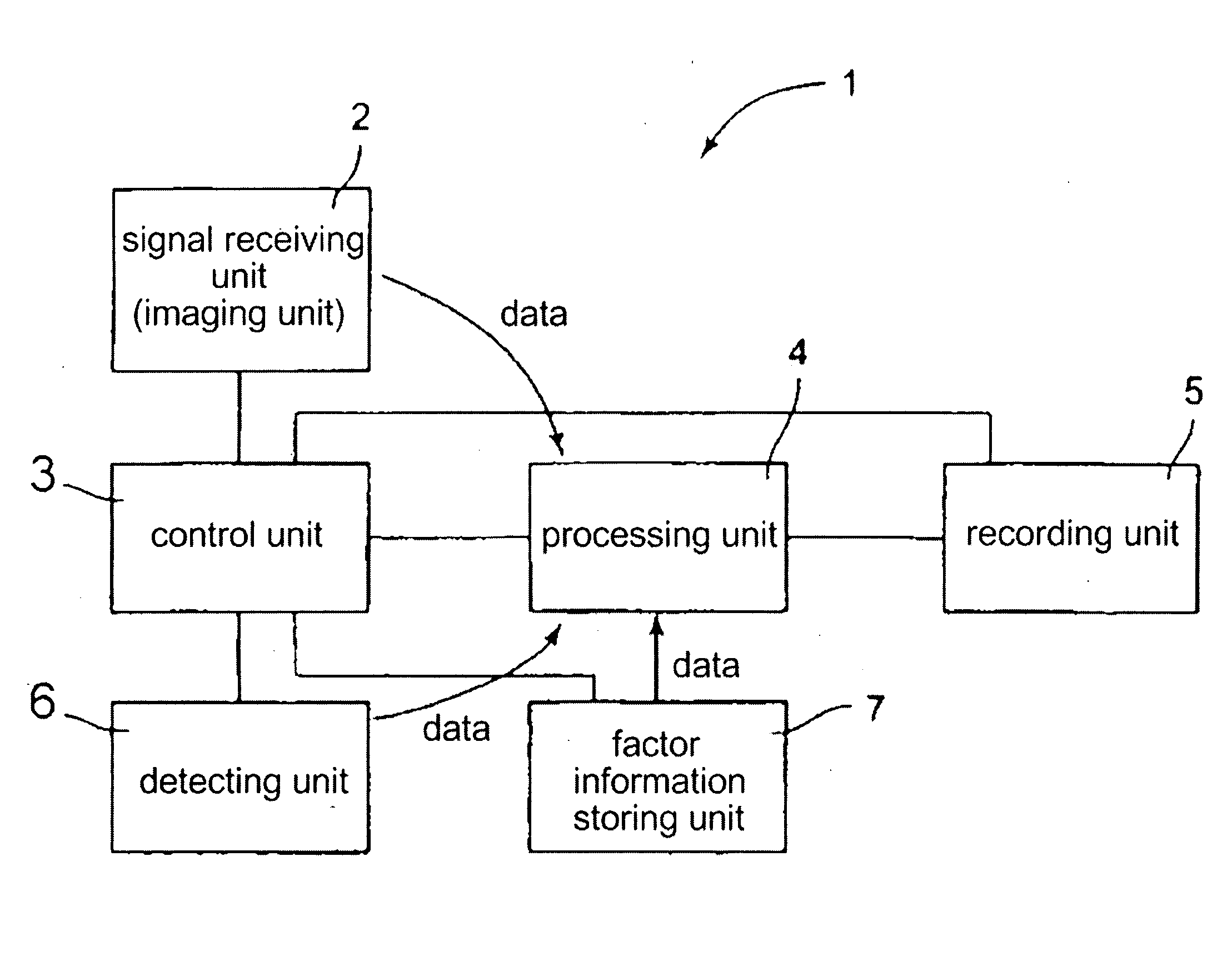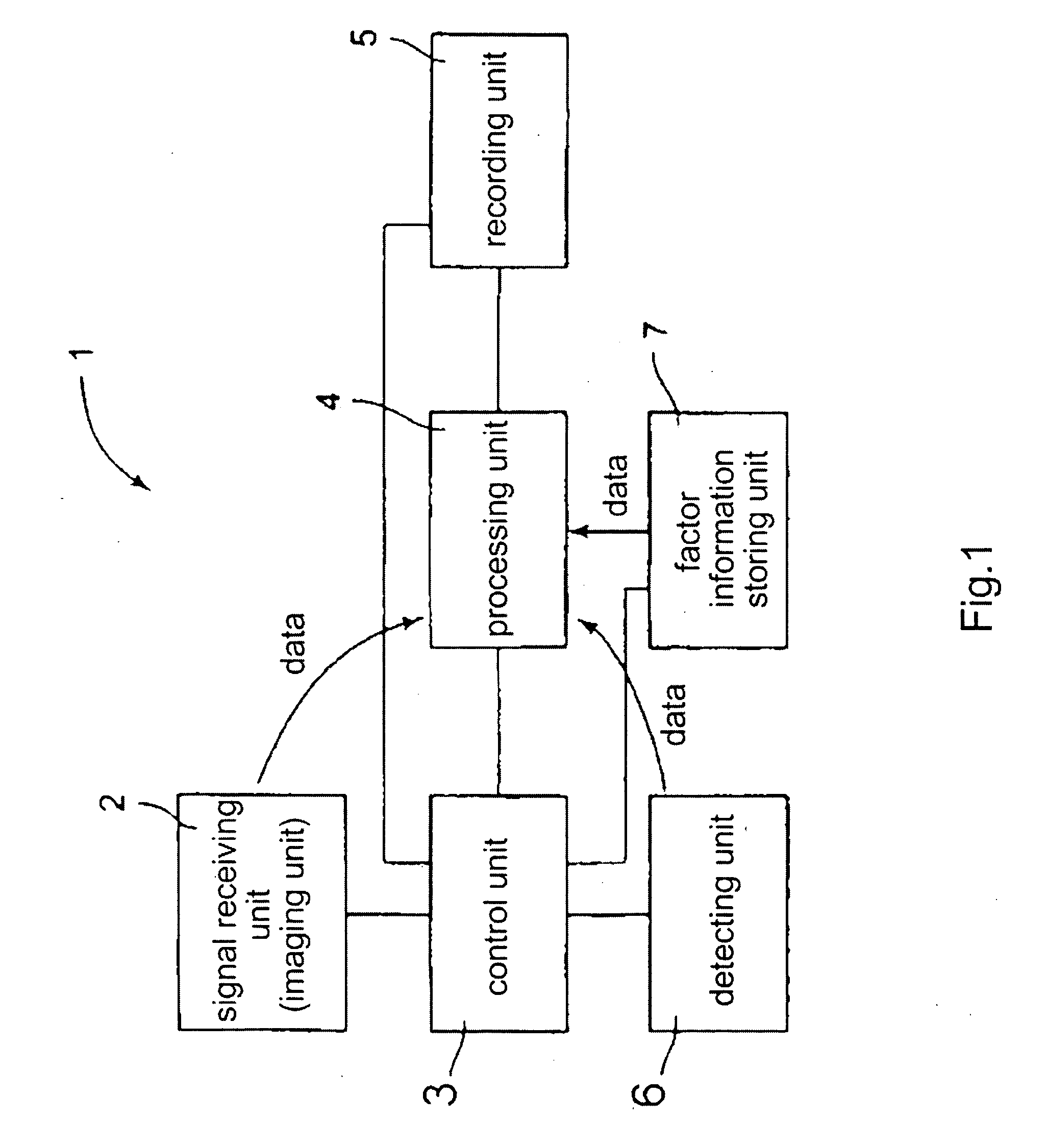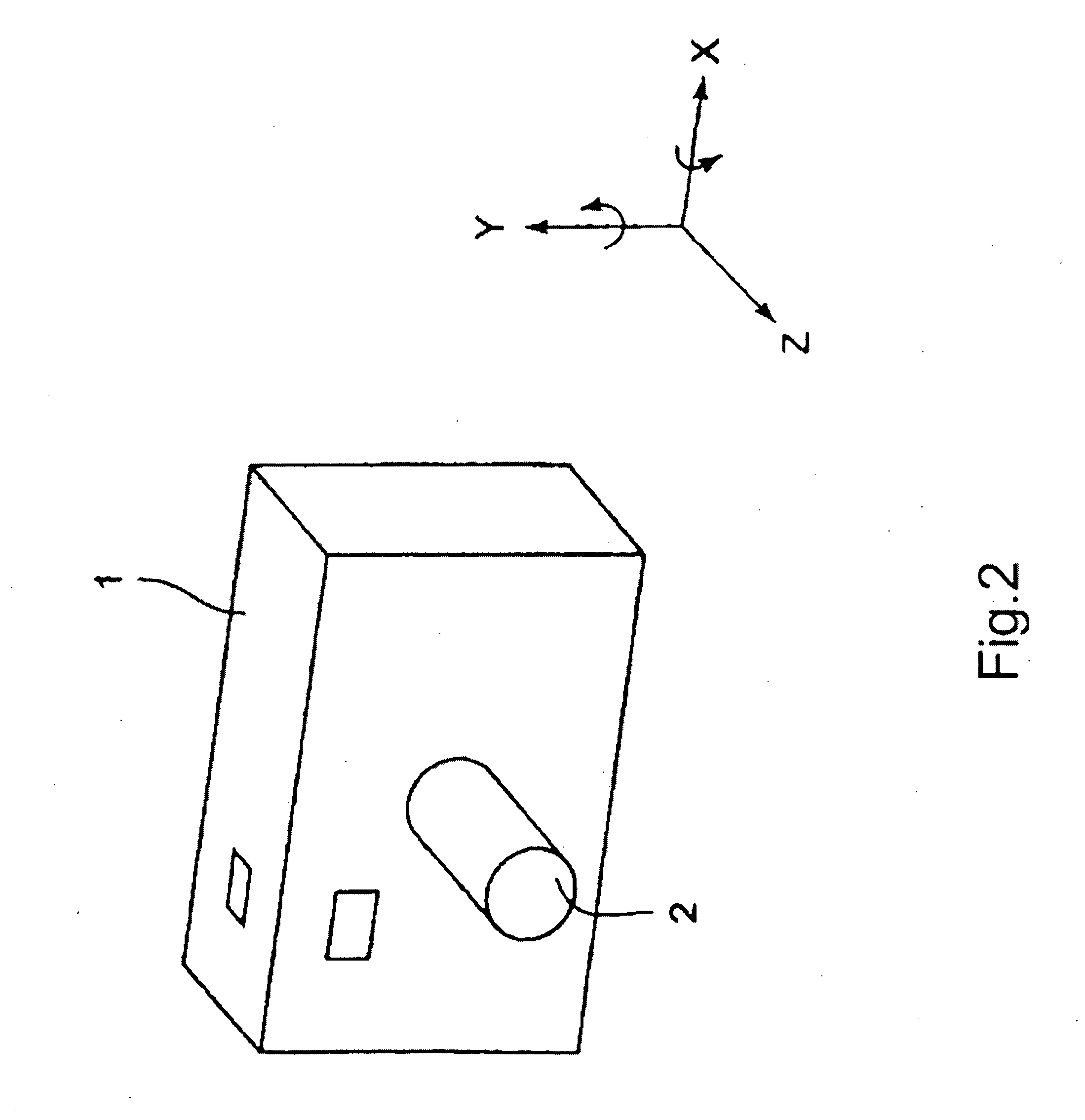Signal processing device
a technology of signal processing and processing circuit, which is applied in the field of signal processing devices, can solve the problems of increasing the cost of installing such hardware and driving circuit, blurring of an image, and general shot image blurring, so as to prevent the device from becoming a large size
- Summary
- Abstract
- Description
- Claims
- Application Information
AI Technical Summary
Benefits of technology
Problems solved by technology
Method used
Image
Examples
Embodiment Construction
[0037]The following reference numerals are used in the following description of the present invention.[0038]1: signal processing device,[0039]2: signal receiving unit (imaging unit),[0040]3: control unit,[0041]4; processing unit,[0042]5; recording unit,[0043]6; detecting unit,[0044]7; factor information storing unit,[0045]G; fluctuation-factor information data (data of information about deterioration factors),[0046]Ga; barycenter value of point spread function,[0047]Img′; initial image data (shot image),[0048]Img; data of correct and intrinsic image without blurring (original image),[0049]E; initial image pixel energy,[0050]Fn: transferred pixel energy,[0051]Rn: restored energy,[0052]cE; correction energy,[0053]En: residual energy amount (object energy to be processed),[0054]Emax: maximum value of residual energy amount,[0055]X: predetermined value of residual energy amount,[0056]Tn: pixel energy amount removed from original image data region,
[0057]A signal processing unit 1 accordi...
PUM
 Login to View More
Login to View More Abstract
Description
Claims
Application Information
 Login to View More
Login to View More - R&D
- Intellectual Property
- Life Sciences
- Materials
- Tech Scout
- Unparalleled Data Quality
- Higher Quality Content
- 60% Fewer Hallucinations
Browse by: Latest US Patents, China's latest patents, Technical Efficacy Thesaurus, Application Domain, Technology Topic, Popular Technical Reports.
© 2025 PatSnap. All rights reserved.Legal|Privacy policy|Modern Slavery Act Transparency Statement|Sitemap|About US| Contact US: help@patsnap.com



